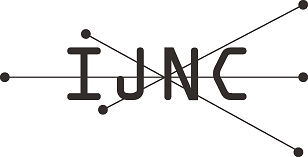Joint design of cooperative protocols and distributed beamforming for multi-hop cognitive radio networks
Abstract
The increasingly crowded wireless spectrum has led to the need of new paradigms in wireless communications and the cognitive radio techniques that can offer promising solutions to the spectrum scarcity. In cognitive radio networks licensed primary users and unlicensed secondary users are allowed to coexist in the same frequency spectrum. Beamforming and MIMO technology can be used to minimize the interference from the secondary users to the primary users while improving the quality of communications when each node is equipped with multiple antennas to form an antenna array. However, equipping multiple antennas at each radio node is not feasible in many applications. In this paper, we consider the radio network with single antenna at each node. We first propose a cooperative network architecture in the network layer. The architecture consists of cooperative clusters used for distributed beamforming, and a routing backbone of the clusters that can avoid the interference to the primary users in the relay route. Distributed algorithms are designed for self-formation of the cooperative clusters and routing backbone. Then we propose a computationally efficient secondary users selection scheme in the link layer for the communications between two cooperative clusters while minimizing the interference to the primary users. The simulation results show that the proposed protocols and algorithms are effective and efficient in terms of time and energy.
Keywords
Cognitive radio; cooperative MIMO radios; distributed beamforming
Full Text:
PDFRefbacks
- There are currently no refbacks.
